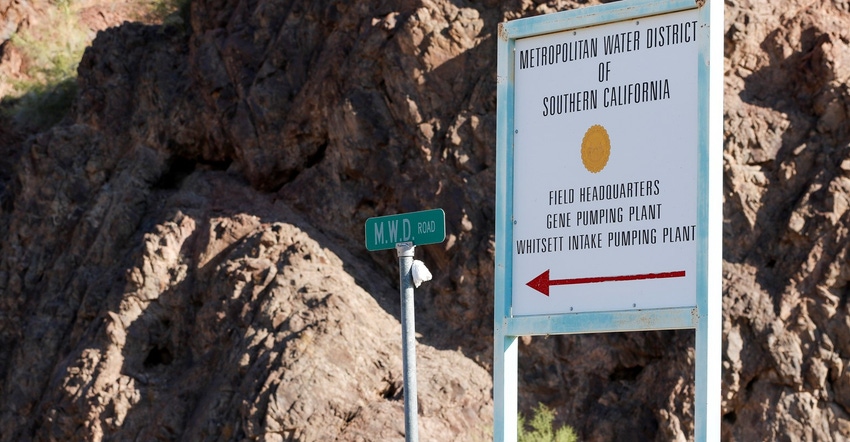
As drought deepens across the West, California's decision to limit State Water Project (SWP) deliveries to 5% forced Metropolitan Water District of Southern California (MWD) to increase pumping from the Colorado River near Lake Havasu. The good news: there's water behind Hoover Dam for them to use.
The bad news: As MWD draws on what they call "intentionally created surplus" under a previous agreement, Lake Mead will fall below the threshold for Tier 1 restrictions, leading to a curtailment of water deliveries to Arizona farmers.
It's not MWD's fault that California reduced its promised deliveries from the SWP. Under an agreement in the late 1960s that established the federal Central Arizona Project, Arizona agreed to a lower priority of Colorado River water.
Negotiations since then established the tiered system that sets water restrictions in place as Lake Mead hits threshold levels. The first was 1,090 feet in surface elevation above sea level. The second is 1,075 feet, or about 10 feet below its current level. At that elevation Arizona farmers will be the first to lose as the CAP has its deliveries cut by 300,000-acre feet.
Arizona farmers will be forced to fallow or pump available groundwater.
Blaming MWD for serving its customers with water it negotiated the right to or is willing to buy from others will not solve the unsustainable water policy that has allowed too many straws to siphon the Colorado River. To exacerbate this the entire Colorado River System is under exceptional drought conditions. Current combined storage in lakes Mead and Powell is insufficient to fill even the smaller of the two reservoirs and is less than half the designed capacity of both. When two reservoirs capable of holding over 53-million-acre feet (maf) of water have less than 20 maf in total storage and projections suggest they will never fill, are we watching the managed decline to obvious depletion?
Books have been written and documentaries produced that call attention to a river system in decline. Sadly, it's going to take further reductions, perhaps to the point where California begins to feel pain from tiered reductions, before something meaningful happens. Under current tiered models Arizona will lose 512,000-acre feet annually under Tier 1 while Nevada must cut 21,000-acre feet from its river allotment. These escalate to 640,000-acre feet for Arizona and 27,000-acre feet for Nevada before California sees its river allotment cut by 200,000-acre feet, which happens when the lake elevation falls to 1,045 feet.
The interconnected nature of where water is used in the West makes this a regional issue with a need for regional problem-solving. As MWD continues to face California SWP shortages, their reliance upon Colorado River water puts states like Arizona and Nevada in jeopardy, and we've not yet broached the topic of the exodus of California residents to places like Phoenix and Las Vegas, which will further increase water demand in those states.
About the Author(s)
You May Also Like






